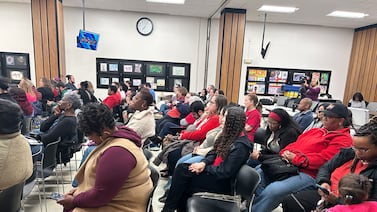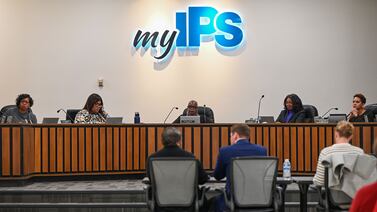Standardized test scores for Camden City students have improved in recent years but a study released this week found “no evidence” that state control of the district contributed to the upward trend.
“To justify [state] intervention, there should be clear evidence of performance gains that could not be achieved under local control,” read the report, published Thursday by New Jersey Policy Perspective, a nonpartisan think tank. “That evidence is absent in Camden.”
Former Gov. Chris Christie pursued a state takeover of Camden City School District eight years ago in part to address test scores that were among the lowest in the state.
Camden, a district of about 15,000 students across its public, renaissance and charter schools, was the fourth district ever to be taken over by the state and currently the only one under full state control.
Newark regained local control last summer after 25 years of state intervention and Paterson regained control of its schools in January after 30 years. Jersey City, the first district to be taken over in 1989, is undergoing a transition back to local control.
Since the 2013 takeover, Camden has seen improvements in graduation rates and a reduction in its suspension and drop-out rates, among other breakthroughs, state-appointed Superintendent Katrina McCombs said on Friday.
“I wholeheartedly disagree with the foundational premise of the report,” McCombs said, adding that those achievements were reached because of state support.
Historically, it has taken decades for state-operated districts to return power to the local school board. Under a takeover, the school board becomes an advisory board and a state-appointed superintendent reports directly to the state commissioner of education.
The report’s findings show that test scores began improving in 2007, not only for Camden students but also for comparable school districts including Newark, Paterson, and Jersey City.
“We see a preexisting trend that test scores in Camden started to go into a positive direction and improve at least six years before the takeover happened,” said Michael S. Hayes, an assistant professor at Rutgers–Camden. Hayes, who discussed the findings in a webinar on Thursday, is one of three authors of the report.
“If we look at both Camden City and its comparison groups, they’re all experiencing positive gains in math and reading…which suggests, again, it’s not the state takeover,” Hayes said. “Something’s happening to all low-income school districts.”
One explanation for improved student performance and test scores could be economic recovery and the positive effect that has in a household, Hayes noted.
A 2019 study of student achievement during the Great Recession — between 2007 and 2009 — found that declines in test scores were greater in school districts that served more economically disadvantaged students.
“As the economic recovery is improving household conditions, that may be translating to overall gains in performance for low-income students across the state,” Hayes said.
Students in Camden are predominantly Black and Latino and about 43% of families live below the poverty level, according to the most recent demographic data.
Student test scores are one of the key criteria used to gauge performance and justify state intervention, although previous studies have shown that they’re not useful measures of progress in state-operated districts.
Other measures of success include the graduation rate, which is now at 69% compared to 49% in 2012, and dropout rate, down to 11% from 21% in 2012, according to the district. There have also been 53% fewer suspensions since state intervention began in 2013, according to the district.
Those aspects of the takeover “are indisputably good,” said Julia Sass Rubin, an associate professor at Rutgers University and co-author of the report. But still, she questioned, “these improvements, could they have happened without state takeover?”
McCombs said she believes that state intervention has helped the district with student achievement at a “quicker” rate than it might have without state control.
“When looking at the graduation rate — that is a far cry from where we were prior to state intervention,” she said.
But the positive change in the graduation rate is much more nuanced, said Keith Benson, president of the Camden Education Association. Benson said the district shifted its grading scale after the intervention, which changed the classification of a failing grade from 65 and below to 59 and below.
“If more people are failing because of a certain grading system, then more people are getting retained and more are choosing to drop out,” Benson said. “Simply shifting the grading scale ensured more people pass and a better graduation rate.”
“That had nothing to do with state takeover,” he added. “It had to do with changing the grade scale.”
Even so, Benson said there has been a “net benefit” to a state-operated school district. He said two schools — Veterans Memorial Family School and Rileta Twine Cream Early Childhood Center — were saved from closure because of state intervention.
“Without state takeover, it would have just been a done deal and we wouldn’t have been able to appeal that decision,” Benson said. “We get to have this flicker of hope and that bit of hope matters a lot when it comes to saving a school from closing.”







